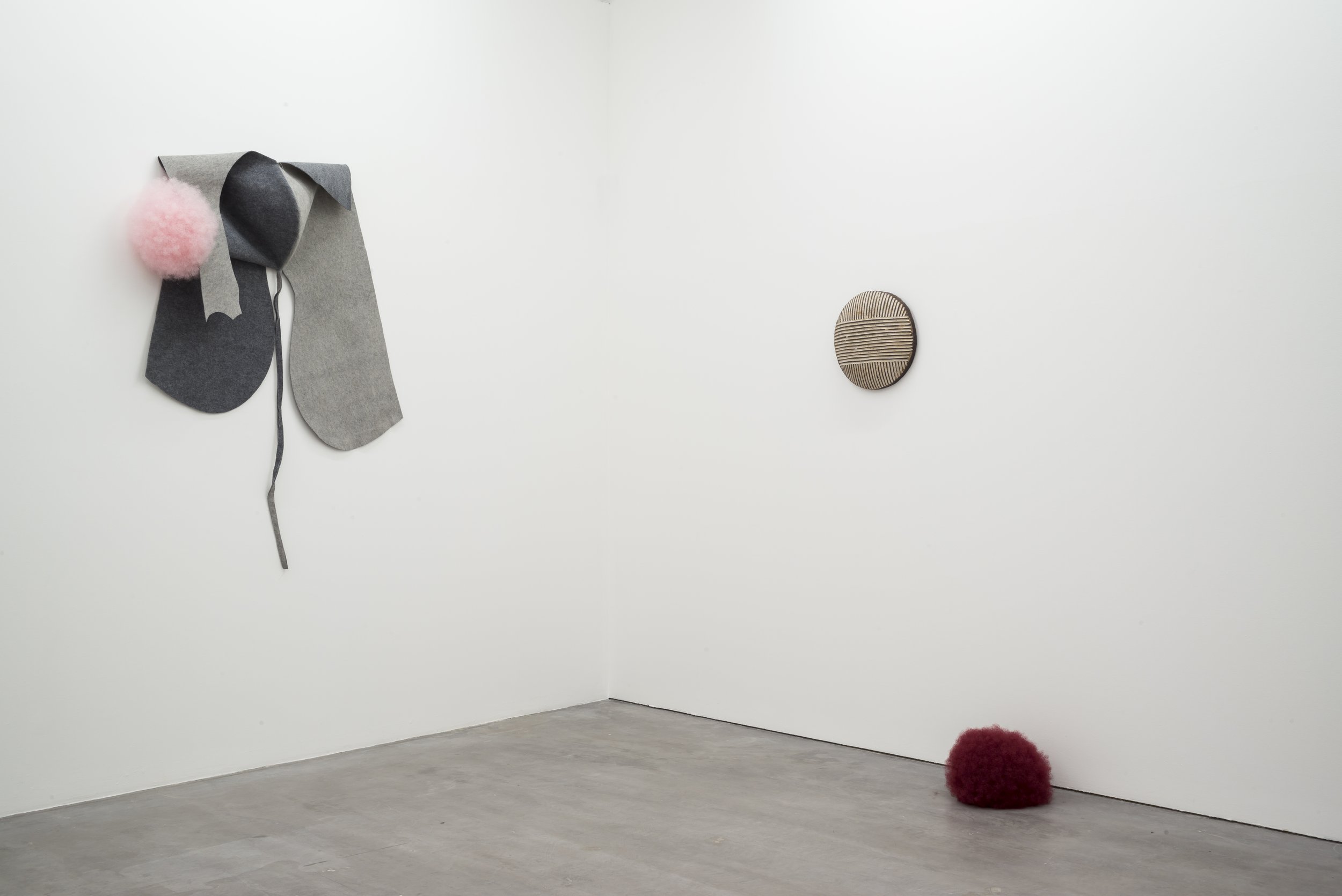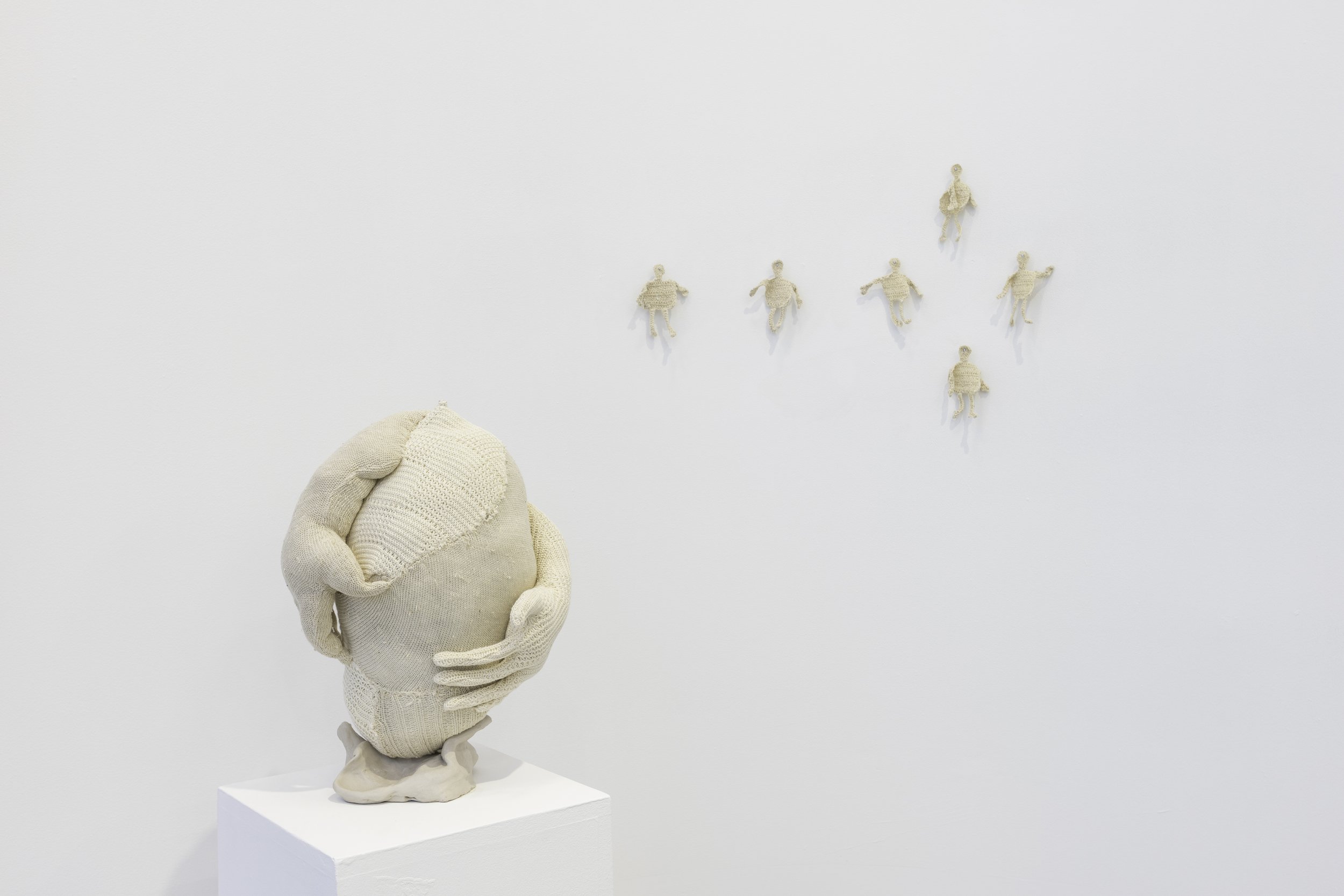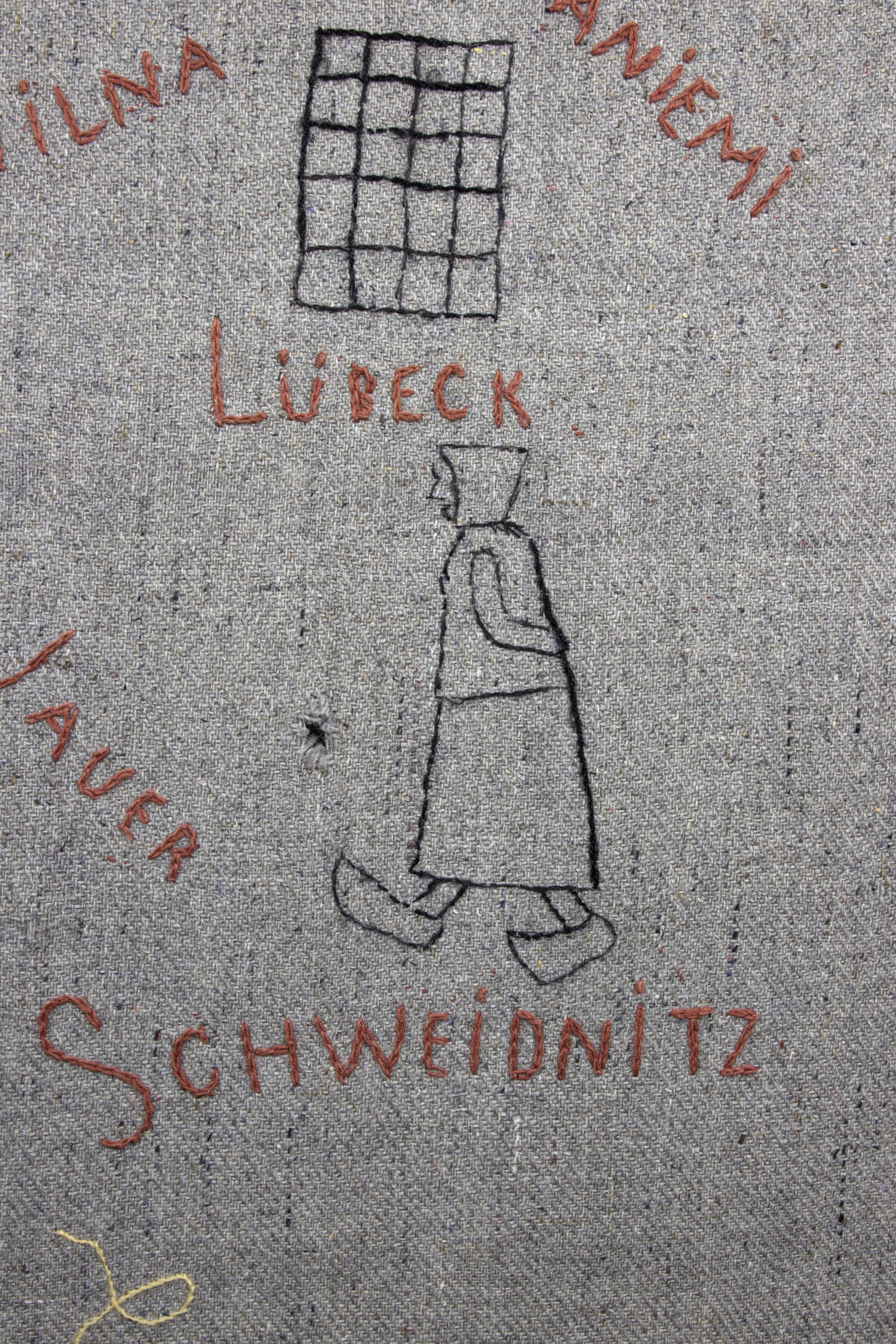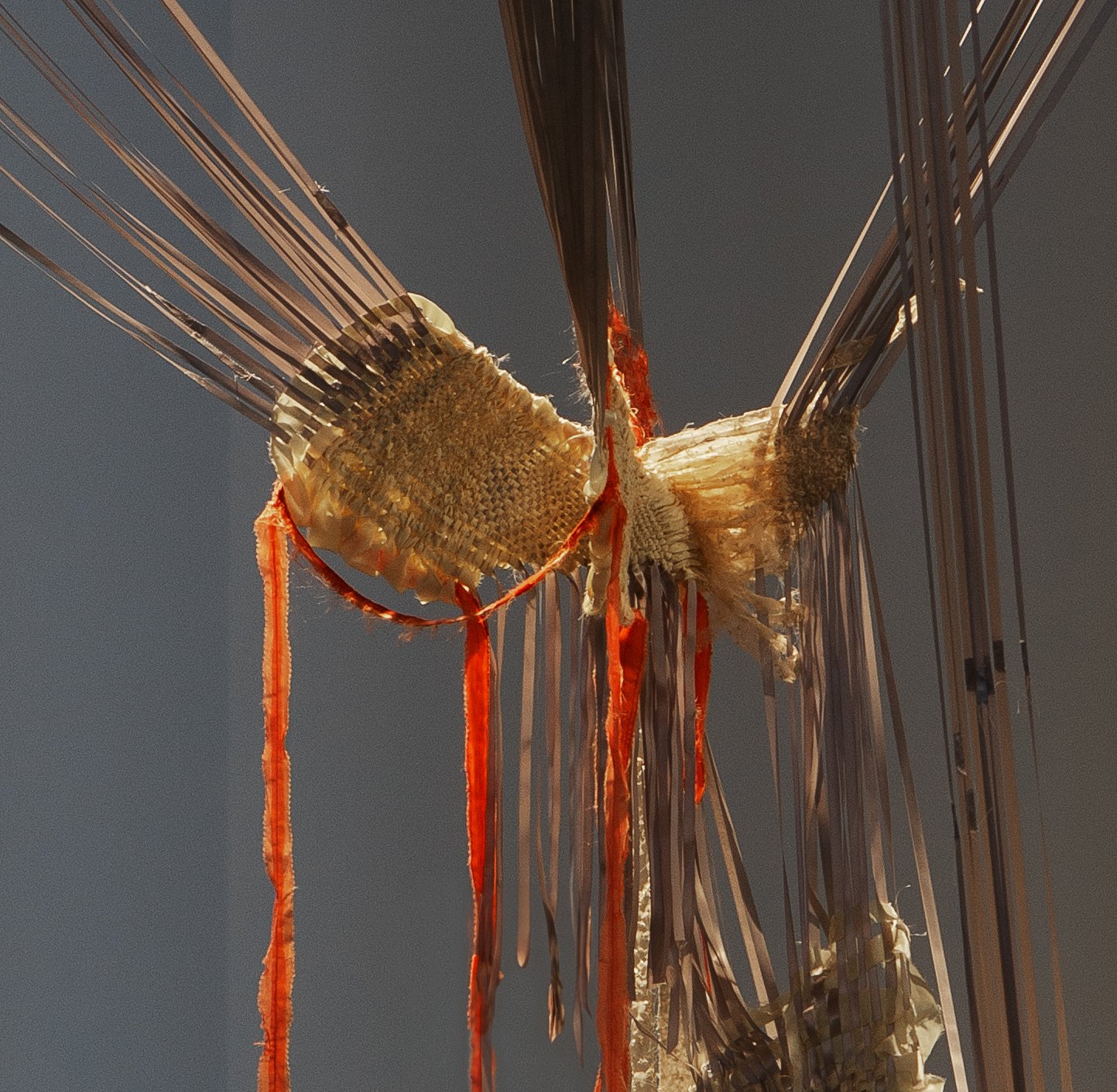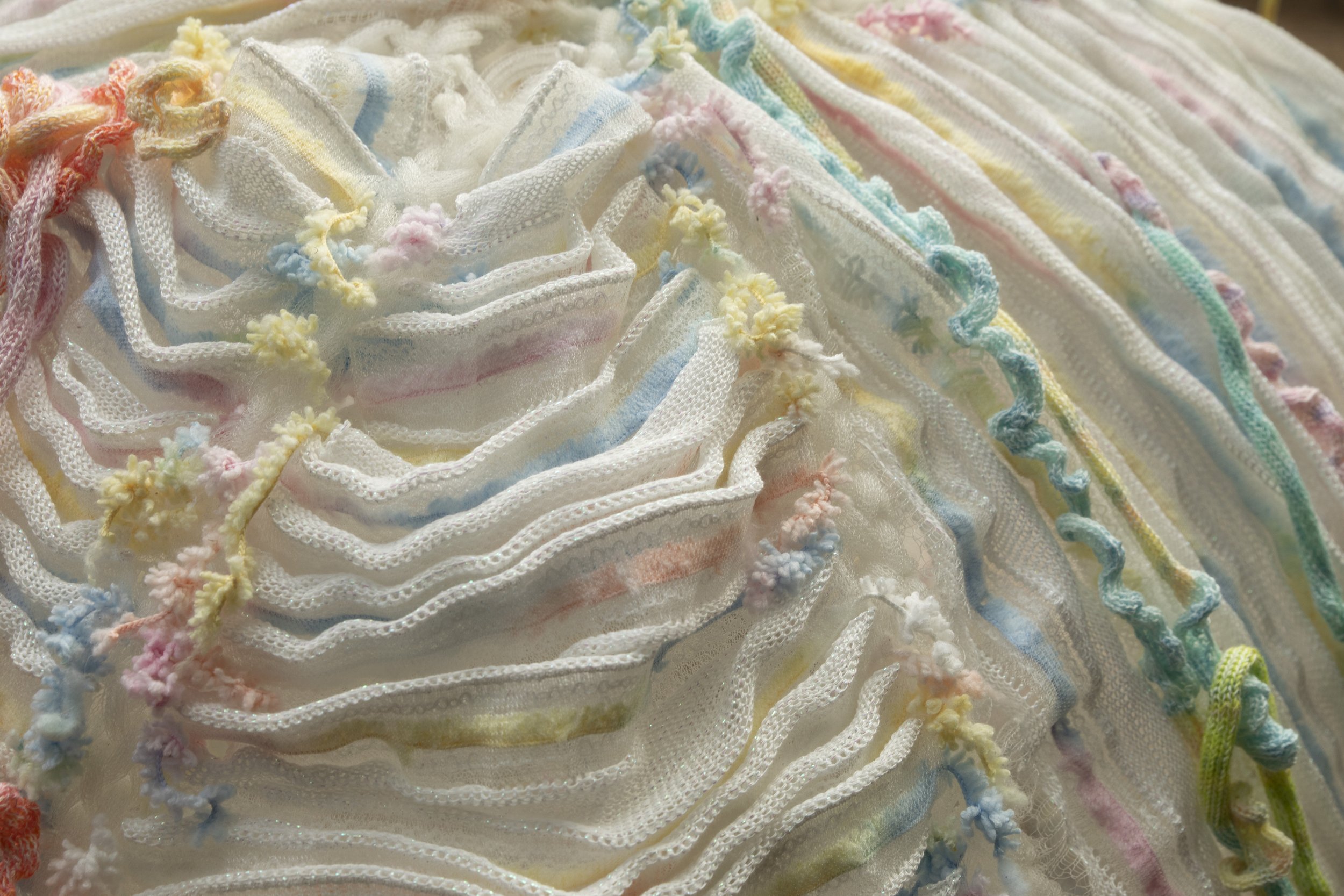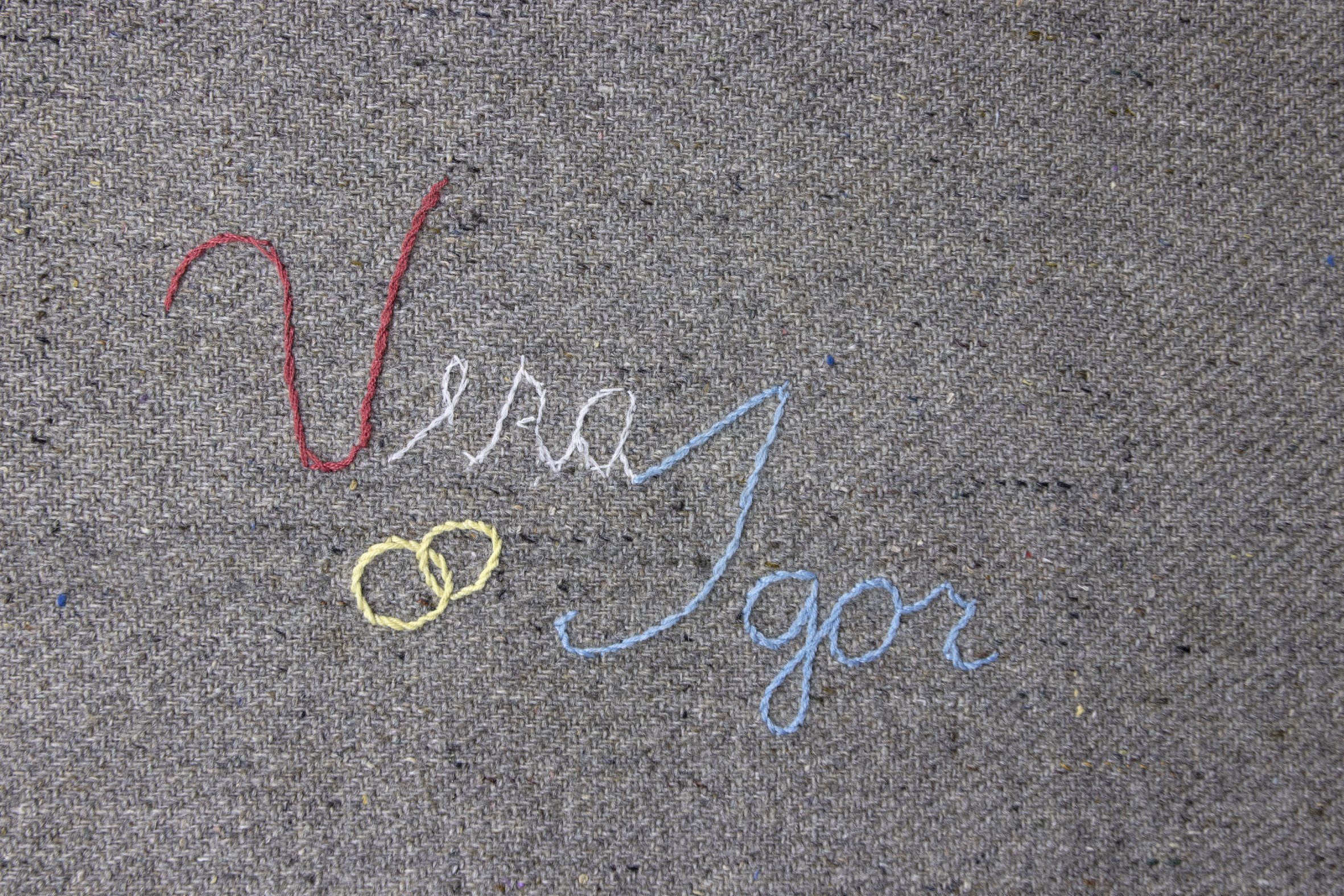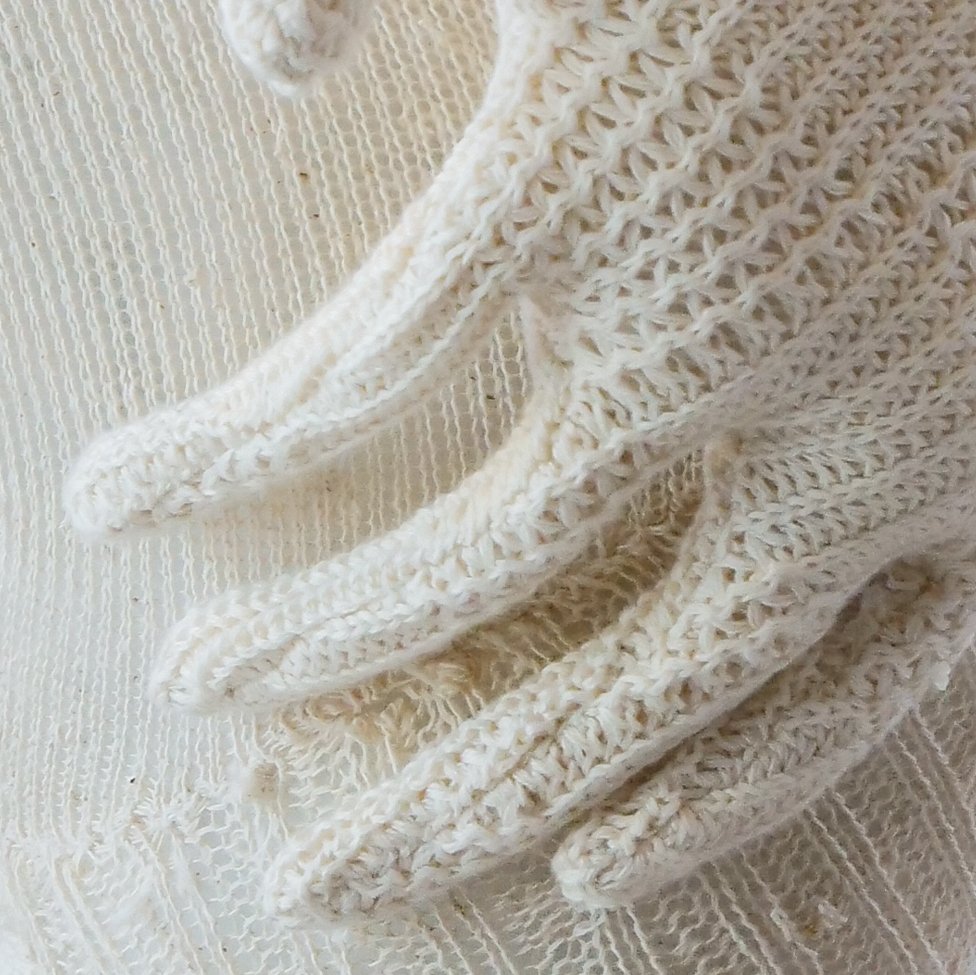Marcia Kure, The Three Graces (triptych), 2014, acrylic wig, bolts, paint, polyester thread, rug and wood, variable dimensions. Collection: Centre Pompidou, Paris. Courtesy of the artist
Photo: Sven Laurent.
Marcia Kure, The Three Graces (triptych), 2014, acrylic wig, bolts, paint, polyester thread, rug and wood, variable dimensions. Collection: Centre Pompidou, Paris. Courtesy of the artist
Photo: Sven Laurent.
Lucy Brown, Bit of Skirt, 2018, free hand weave, artist`s own technique, vintage and 1950’s ball gowns, dresses and petticoats, satin ribbon, steel tacks, 250 × 280 × 300 cm, The Central Museum of Textiles in Łódź collection.
Photo: Norbert Piwowarczyk
12-16.02.2024
another way of speaking explores the body and textile as metaphors; an alternative means of communication. Cloth can be a physical, cultural or symbolic extension of the body, serving as a substitute for the body to express messages and influence perceptions. The signs and patterns learned within cultural and social groups shape our understanding of clothes, and this knowledge helps us receive the messages encoded within an item of clothing or recognize the rules it challenges.
In another way of speaking, diverse artworks bring attention to this affinity between body and cloth, particularly the unfamiliar and hidden details. The subjects that emerge include identity, gender, femininity, notions of place, history and memory, and women's labour in the textile industry.
another way of speaking is part of a broader curatorial project titled I Hear the Body Speak, which looks at how the body produces and transmits meaning without voice.
Nominated by Bukola Oyebode:
The Three Graces by Marcia Kure is an abstract portrait of legendary African women symbolizing the scarred, vulnerable and resilient. It strives to deconstruct traditional understanding of the body. The forms are the outcomes of experimenting with cloth-making and sculpture techniques such as pattern drafting, assemblage and 2D-3D processes. One could see the forms as a gathering of colourfully dressed women or, simply, as cut-out shapes. The white stripes on the wooden shields, which appear like surgical stitches on the body, relate to the ongoing and normalized infliction of physical and psychological wounds on the female body. Shapes appearing like keloids and incisions correspond to imprints from beauty and identity rituals by African women and are elements of how the body speaks.
Nominated by Central Museum of Textiles:
Lucy Brown uses old and discarded second-hand clothes, hair and artefacts to create woven installations, antiform sculptures and site-specific art. Bit of Skirt is an anti-form sculpture used by the artist to explore female identity, physical boundaries and intimacy, which were once protected, or restricted, by clothes. She has dismantled the traditional perception of femaleness, which expressed itself through attire: ball gowns, petticoats and skirts. In doing so she shows how the concept of femaleness has been deconstructed and redefined by women themselves. The ‘skirt’ is the clothes’ border dividing the inside personal and outside public space. The title is a British informal pejorative term denoting an attractive woman.
What is the textile trying to say, and how is it perceived?
Some artworks navigate the boundaries of what is visible and invisible within the wide range of human experience and emotions. Forms that are sometimes anthropomorphic, deconstructed, sculptural or two-dimensional emphasize the agency of different textile materials and the significant histories and meanings they have acquired over time.
Nominated by Caroline Kipp:
The title of artist Shradha Kochhar’s We Share the Sun is a metaphor, another way of saying that “even when we are not together, we are still connected.” Knit arms embrace an abstract, shared body, symbolizing the power of love and memories to bridge distances. Stitched together from many samples, it represents how the people we love become part of us, even in their absence. Kochhar uses homespun and hand-knitted khadi made from kala cotton—an organic strain indigenous to India. Khadi has a rich history, epitomizing decolonization since Gandhi encouraged its embrace as a protest against English rule. The artist’s use of khadi is thus profoundly political and personal, functioning as a substitute for the conceptual and literal Indian body within her work.
Nominated by Zoe Yeh:
Pei-Ying Lin is an artist / designer from Taiwan and currently based in Eindhoven, the Netherlands. Her main focus is on the combination of science and human society through artistic methods, and is particularly interested in building a common discussion ground for different cultural perspectives. In the project, Studies of Interbeing – Trance 1:1, Lin translated the coronavirus’ spike protein sequences into knitted structures, taking the inspiration where the movements of ribosomes while synthesising polypeptides are similar to the human actions of hand knitting. She then invited performers to act as a medium, simulating a shamanic spirit-summoning ritual by using a combination of religious melodies and bodily movements, calling forth the spirit of the coronavirus, trying to write cultural rituals of virus spirituality.
Shradha Kochhar, We Share the Sun, 2023, hand-knit, hand-spun Khadi cotton.
Pei-Ying Lin, Studies of Interbeing – Trance 1:1, 2020 – 2023, knitted textile installation and performance.
Pei-Ying Lin, Studies of Interbeing – Trance 1:1 (detail), 2020 – 2023, knitted textile installation and performance.
Dagny Loe, embroidered wool blanket, Grenselandmuseet. Photo: Gry Andreassen.
Kawita Vatanajyankur, Knit, 2019 (video still).
Daniela De Lorenzo, Cura la mia destra (Heal My Right), 2005, felt.
Courtesy the artist. Photo: Serge Domingie
Ada M. Patterson, Their whole world is turning, 2019-2020, from the series Kanga for the Present, printed ink on cotton. TextielMuseum collection.
Photo: Aad Hoogendoorn
Ada M. Patterson, A Ship of Fools, 3-channel digital music video installation made with Clementine Edwards, Ark Ramsay, M. Maria Walhout, Nicole Jordan and Rob Rietveld, video still, 2020-2022. TextielMuseum collection.
body and cloth as language
Studying the textile materials and how they manifest–as threads, felt, cotton, or wool; new, second-hand or vintage; embroidered or knitted; and the production processes–are crucial to understanding the artworks' narratives and the overall theme.
Nominated by Hilde Skancke Pedersen:
Dagny Loe (1913-2010) from Northern Norway was active in the civil resistance against the Nazi invaders during World War 2. She was captured and sentenced to 15 years of captivity in Nazi prison camps in Germany and Poland. In these camps she owned a grey wool blanket. She and her fellow prisoners of war embroidered the blanket with stumps of coloured wool that they could get hold of. Dagny depicted her children, the name of her hometown, flowers and the Norwegian flag, but also the name of her travel route, barred windows and lice. Her hope was that if she perished, somebody would bring the blanket to her children as a last goodbye. But Dagny survived and returned home.
Nominated by CHAT (Centre for Heritage, Arts and Textile):
Knit is part of Thai artist Kawita Vatanajyankur’s video work series Performing Textiles. In Knit, Vatanajyankur portrays the female body as a machine in textile making, alluding to the exploitation of labour in global industries and consumerism. She silently and mechanically repeats the weaving movements using her entire body. As the work goes on, she begins to struggle with pain, breathlessness and vertigo. With colourful visuals, the performance conveys not only a sense of resistance but also a paradox in the garment industry – the unspoken truth of intense labour overshadowed by the glamour of fashion.
Nominated by Lottozero:
In Cura la mia destra (Heal My Right), two bodies stretch toward each other in a mirrored and imperfect reflection. It’s the theme of the double that in Daniela De Lorenzo’s work, declined between sculpture, video and photography, generates other gazes on the existence, other bodies and identities.
Yet, it is always and only the artist's body that becomes cast and imprinted in the felt, softened with water and then shaped. An ancient and protective material, the artist chooses it for its ability to retain the memory of the gesture, that of pressing wool fibers, or shaping unnatural, sometimes convulsive poses. Potential anatomies and possible identities, suspended in instants not subject to the temporal line, between being and non-being, presence and absence.
Nominated by TextielMuseum:
In A Ship of Fools, Ada M. Patterson asks how we can connect through our shared experience of the global destruction caused by climate change. Can we find hope in this moment of crisis? How can we help one another grieve what will be lost? A body inhabits a lonely lifeboat stranded on a beach. The lifeboat might save its passenger as the beach floods, or it might serve as a tomb for lives already lost.
Each body in this hostile environment is wrapped in a kanga, a printed textile from East Africa. Each kanga has a name and carries a message for its wearer. The kanga in A Ship of Fools were created by Patterson as tributes to her friends, who narrate their experiences of the climate change crisis in the soundtrack. Is it possible to find new ways of inhabiting the world?
THE CURATOR
Bukola Oyebode is an editor, curator and independent publisher living in Amsterdam. She has contributed to different arts and culture publications, especially at TSA Art Magazine, where she was the lead editor until 2023. As a curator, Oyebode is interested in artistic and research practices concerned with sensory experience, bodily communication and representation, and human-to-non-human interaction, presented through performance, sound and other time-based media.
She is committed to studying and publishing about contemporary art, particularly created by artists of African descent.
Bukola Oyebode. Photo: Sander Stoepker.
Textile Culture Net is co-funded by the European Union. Grant Agreement n°101099994


